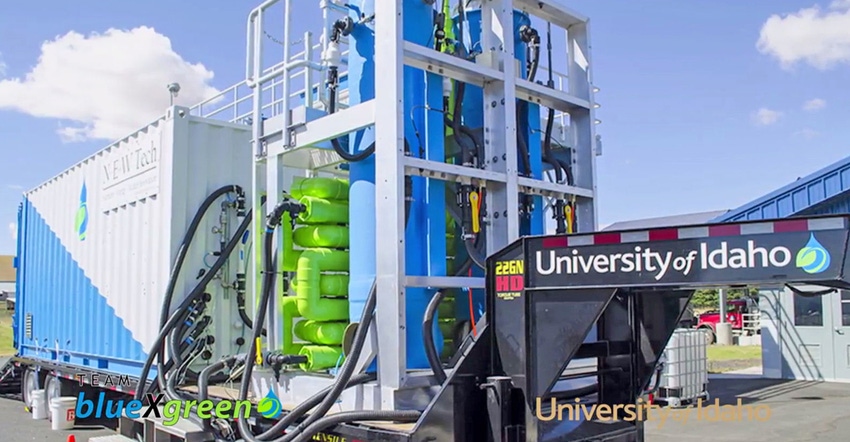December 20, 2016

Competitions are created to focus individual or group effort on a final goal. For the Olympics, it's for the gold; for Nobel prizes, it's for the recognition (and perhaps the check). For the Everglades, the goal is to save the region — and the Everglades Clean Water Prize is a $10 million competition that is drawing entrants from around the world to find ways to help clean up this natural area. A team from the University of Idaho has won the first phase of this scientific challenge.
UI researchers of Team blueXgreen created a proposal to adapt its wastewater treatment technology to help clean up water entering the Everglades. The technology removes phosphorus and nitrogen from water.
The idea won The Everglades Foundation's opening phase of the George Barley Water Prize, which is a four-year, $10 million competition involving 61 international teams.
The University of Idaho team includes Greg Moller, environmental chemist; Daniel Strawn, soil scientist; and Martin Baker, engineer. All are from the UI College of Agricultural and Life Sciences. The proposal submitted is based on the UI-developed N-E-W Tech water treatment process that reduces phosphorus concentrations in wastewater far below regulatory requirements.
Added Moller: "We are pleased to win the first round. We are confident that our process offers a new, sustainable path forward in dealing with a serious pollution problem that leads to major environmental and human health problems across the U.S. and around the world."
The UI researchers were awarded $487,000 in grants in 2015 from the Idaho Global Entrepreneurial Mission (IGEM) to develop a prototype of the process on a high-tech trailer. Through testing on campus, at the UI research dairy and at Moscow and Troy, Idaho's water treatment plants, the team has conducted large-scale trials with promising results.
Already, a United Kingdom-based company has signed an option to license the technology for use in Europe, and a U.S. company is reviewing licensing opportunities. The process expands the focus of earlier UI-patented water treatment technologies developed by Moller that are in use in South Korea, the United Kingdom and the U.S.
For the first-phase win, the UI team won $5,000. That phase focused on ideas, and qualified the UI team's entry for the next round and a $25,000 prize. The Everglades Foundation's George Barley Water Prize is seeking a solution to the pollution that promotes algae growth in the region. That algae growth causes fish and wildlife damage in the Everglades and along the Florida coast.
How the process works
The N-E-W Tech process adds biochar — tiny bits of activated charcoal — to wastewater to capture nitrogen and phosphorus. The team is working with a Colorado-based biochar manufacturer to enhance the fertilizer value of the captured nitrogen and phosphorus. The UI process adds ozone to break down toxic compounds and disease agents, including viruses and bacteria.
The process binds the charcoal with the soil, enhancing its fertility and making the process climate-friendly and carbon-negative.
The competition includes four stages, beginning with the idea phase. Next up for the teams is laboratory and pilot-scale testing. The contest concludes with the construction of a large-scale plant in Florida. The ultimate winner is scheduled to be chosen in late 2020.
“This international award recognizes UI researchers’ efforts to make a difference in Idaho, the nation and the world through technology development,” says Janet Nelson, UI’s vice president for research and economic development. “Team blueXgreen’s dedication to innovation will benefit them not only as this competition goes forward, but also as they continue to expand the possibilities for reducing pollution using N-E-W Tech.”
Source: University of Idaho
You May Also Like




